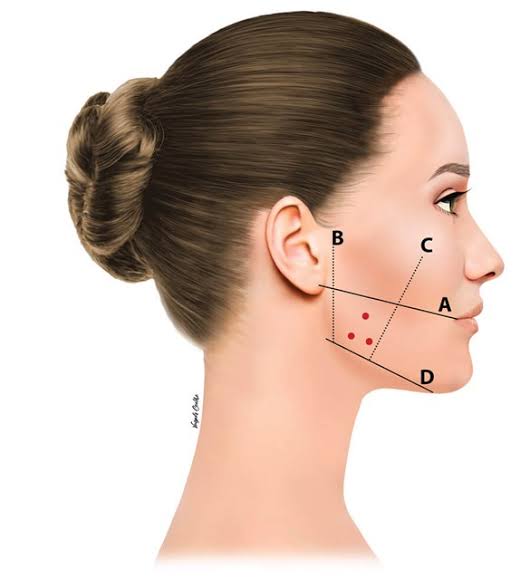Masseter Botox is a cosmetic treatment involving the injection of botulinum toxin (Botox) into the masseter muscles, which are the muscles located at the back of the jaw responsible for chewing. This procedure is typically done for both medical and aesthetic reasons, and it has gained popularity for its ability to slim the jawline and alleviate issues like teeth grinding and jaw pain.
Here’s everything you need to know about masseter Botox, including how it works, the benefits, the risks, and more!
Table of Contents:
- What is Masseter Botox?
- How Does Masseter Botox Work?
- Benefits of Masseter Botox
- What to Expect During the Procedure
- Aftercare and Recovery
- Potential Risks and Side Effects
- Is Masseter Botox Right for You?
- Wrapping Up: Final Thoughts
- Frequently Asked Questions
1. What is Masseter Botox?
Masseter Botox involves the injection of Botox into the masseter muscles, which are located on either side of your jaw. These muscles are responsible for closing the jaw when you chew. By injecting Botox, the muscles are temporarily weakened, leading to a slimmer jawline and reduced muscle activity.
While it’s often used for cosmetic purposes, masseter Botox is also effective for medical concerns like bruxism (teeth grinding) or temporomandibular joint (TMJ) disorders, where overactive or overly developed masseter muscles can cause discomfort or pain.
2. How Does Masseter Botox Work?
Botox works by blocking the signals between nerves and muscles. When Botox is injected into the masseter muscles, it temporarily paralyzes them, preventing them from contracting as forcefully as before. This results in the muscles shrinking and softening over time.
For aesthetic purposes, this can lead to a more contoured, slender jawline. For medical purposes, it can alleviate symptoms like jaw pain, teeth grinding, and headaches associated with TMJ disorders.
3. Benefits of Masseter Botox
There are several reasons why people opt for masseter Botox. These include:
- Slimming the Jawline: Many people use masseter Botox to create a more feminine, V-shaped face. By reducing the size of the masseter muscles, the jawline becomes narrower and more defined.
- Teeth Grinding Relief (Bruxism): For individuals who grind their teeth, often during sleep, Botox can help relax the masseter muscles, reducing the intensity and frequency of grinding.
- TMJ Disorder Relief: If you suffer from TMJ (Temporomandibular Joint) disorder, masseter Botox can help alleviate the jaw pain, headaches, and discomfort caused by overactive jaw muscles.
- Reduction of Jaw Tension: If you experience tightness in the jaw or clenching throughout the day, Botox can reduce the muscle activity that causes this tension.
4. What to Expect During the Procedure
The procedure is relatively quick and minimally invasive. Here’s a step-by-step breakdown of what to expect:
- Consultation: Before getting the treatment, you’ll meet with a licensed medical professional (such as a dermatologist or cosmetic surgeon) to discuss your concerns and goals. They will assess your masseter muscles and determine the right dosage of Botox for your needs.
- Injection Process: The procedure itself usually takes about 15-30 minutes. The practitioner will inject Botox into the masseter muscles on both sides of the jaw using a fine needle. The number of injections may vary depending on the desired results and the size of your masseter muscles.
- Pain Level: Most people report minimal discomfort during the procedure. The needle used for injections is very thin, and any pain or discomfort is generally brief and tolerable.
5. Aftercare and Recovery
Masseter Botox requires minimal downtime, and most people can return to their daily activities immediately after the procedure. However, there are a few things to keep in mind for optimal results:
- Avoid Massage or Pressure: Don’t massage or apply pressure to the treated area right after the procedure, as this can affect how Botox spreads.
- Exercise Caution with Physical Activity: Avoid strenuous exercise for at least 24 hours after the treatment to ensure that Botox stays in place and does not spread to unintended areas.
- Follow-Up Appointments: It’s recommended to schedule a follow-up appointment with your provider to assess the results and determine if any additional treatments are needed.
6. Potential Risks and Side Effects
As with any cosmetic treatment, masseter Botox comes with potential side effects and risks. These are typically mild and temporary, but they include:
- Bruising and Swelling: Some people may experience minor bruising or swelling at the injection sites. This usually goes away within a few days.
- Headaches: A common side effect of Botox injections is mild to moderate headaches, which typically resolve after a day or two.
- Weakness or Asymmetry in the Jaw: In some cases, Botox can lead to temporary weakness in the jaw muscles or slight asymmetry. This is generally temporary and improves as the Botox wears off.
- Difficulty Chewing: In rare cases, excessive weakening of the masseter muscles can make chewing food difficult. This is more likely to happen if too much Botox is injected or if the procedure is performed incorrectly.
7. Is Masseter Botox Right for You?
Masseter Botox might be a good option if you are looking for a more defined jawline, want to address teeth grinding, or need relief from TMJ discomfort. However, it may not be suitable for everyone, particularly if you have certain health conditions, such as neurological disorders, or are pregnant.
Things to consider before getting masseter Botox:
- If you want the treatment for cosmetic purposes, be sure to have realistic expectations about the results. Botox can slim the jawline, but it may not create dramatic changes if your jaw muscles are particularly large.
- If you suffer from bruxism or TMJ, Botox can be an excellent option for relief, but be prepared for a series of treatments, as results may take time to become noticeable.
- Always consult with a board-certified professional who has experience in performing Botox injections to ensure a safe and effective treatment.
Final Thoughts
Masseter Botox offers a safe and minimally invasive way to enhance your jawline, reduce symptoms of teeth grinding, and alleviate discomfort from TMJ disorders. With little downtime and noticeable results in a short time, it’s a popular choice for many looking to address both aesthetic and medical concerns related to the jaw.
As with any cosmetic procedure, it’s important to do your research, set realistic expectations, and consult with an experienced professional to ensure the best results.
People Also Ask
Q1: How long do the effects of maseter Botox last?
The effects of maseter Botox typically last about 3-6 months. After this, the Botox begins to wear off, and you may need touch-up treatments.
Q2: Is maseter Botox painful?
Most people find the procedure tolerable, with minimal discomfort. The needle used is small, and any pain or soreness usually subsides shortly after the treatment.
Q3: Will my jawline be permanently slim after Botox?
No, the results are not permanent. Botox will need to be reapplied every few months to maintain a slimmer jawline.
Q4: Can I chew normally after maseter Botox?
Most people can still chew normally after maseter Botox, but it’s possible to experience some temporary difficulty if the muscles become too weak or if too much Botox is injected. However, this is rare.
Q5: Can maseter Botox help with a square jawline?
Yes! One of the main aesthetic uses of maseter Botox is to soften and slim a square or angular jawline, giving it a more oval or V-shape.
As with any procedure, it’s important to discuss your goals with a qualified professional to determine if maseter Botox is the right choice for you.




Thanks for sharing superb informations. Your web site is so cool. I am impressed by the details that you’ve on this blog. It reveals how nicely you understand this subject. Bookmarked this web page, will come back for extra articles. You, my friend, ROCK! I found simply the information I already searched all over the place and just could not come across. What a great website.
I really like your writing style, great information, thanks for posting : D.
I was recommended this web site by my cousin. I am not sure whether this post is written by him as nobody else know such detailed about my difficulty. You’re incredible! Thanks!
Valuable information. Lucky me I found your website by accident, and I’m stunned why this accident didn’t came about earlier! I bookmarked it.
You made some good points there. I did a search on the subject matter and found most people will agree with your website.
I genuinely enjoy looking at on this internet site, it has got fantastic articles.